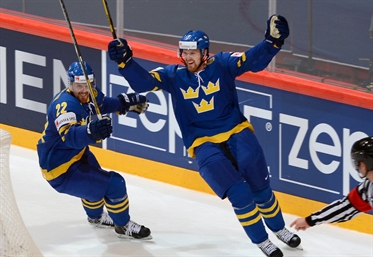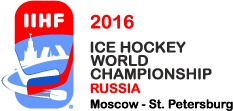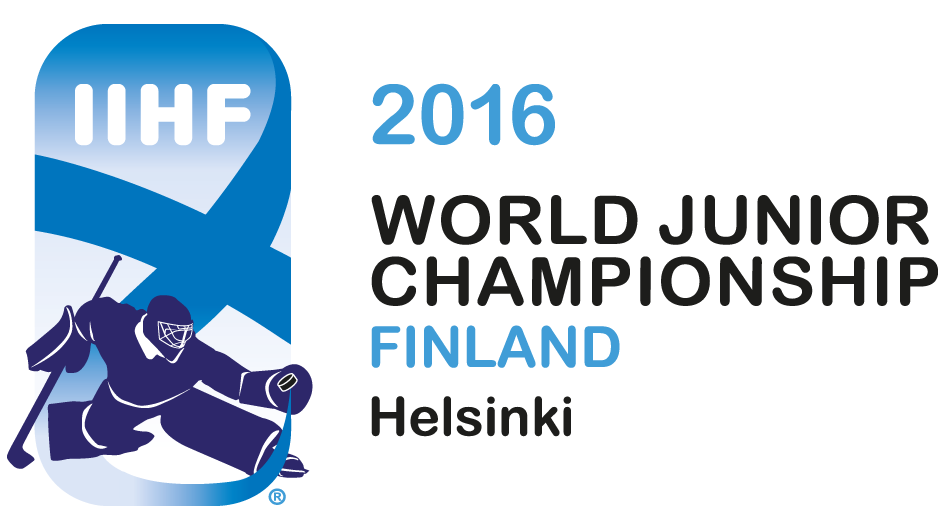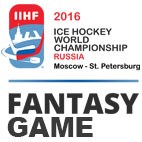Do airlifts work?
Do airlifts work?
Adding NHL stars during Worlds is hit and miss

 Adding NHL stars paid off big-time for Sweden when it ended the "home ice curse" with gold in 2013, thanks to the Sedin twins. Photo: Andre Ringuette / HHOF-IIHF Images
Adding NHL stars paid off big-time for Sweden when it ended the "home ice curse" with gold in 2013, thanks to the Sedin twins. Photo: Andre Ringuette / HHOF-IIHF Images
Looking back at some examples from the new millennium, there are no easy answers. In some ways, it’s like when your favorite pro team signs a highly touted free agent. Maybe he’ll fit in and score like crazy en route to a long-coveted championship. Or maybe he’ll disrupt the existing chemistry and the team will fail to reach its goal.
Most teams that have won gold in recent years, be it the 2006 Swedes, 2011 Finn, or 2015 Canadians, stick with the same roster throughout.
Years ago, Team Canada reached the conclusion that airlifting NHL players in is rarely worth it. That was based on their experience from the last time the IIHF World Championship was held in St. Petersburg, Russia back in 2000.
The Canadians were looking for their first gold since 1997. When the Colorado Avalanche eliminated the Detroit Red Wings in five games in the second round, Canada decided to bring in some seasoned veterans with Stanley Cup-winning experience. Forwards Kris Draper and Martin Lapointe and defenceman Larry Murphy were added from the Wings.
However, the move didn’t play well in the dressing room or on the ice. Players like Brendan Morrison and Robyn Regehr, who’d been with the team since Day One, were made healthy scratches during the playoff round. Coach Tom Renney’s squad lost 2-1 to the eventual champion Czech Republic in the semi-finals, and then 2-1 again to Finland in the bronze medal game.
Since then, Canada has refrained from adding new players during the tournament, except in special cases or when injuries call for it. And the policy has been quite successful, as Canada has gone on to win four more gold medals (2003, 2004, 2007, 2015).
In the early 2000s, Sweden went through multiple cases of “close but no cigar” when it added big-name players.
In 2001, Mats Sundin (Toronto Maple Leafs) played the final two games, but could only muster one assist as Sweden took bronze home from the Worlds in Germany.
Tre Kronor hosted the 2002 tournament in Gothenburg and brought in whoever they thought could boost the quest for home ice gold. Per-Johan Axelsson (Boston Bruins), Kim Johnsson (Philadelphia Flyers), and Michael Nylander (Chicago Blackhawks) were among the notable names. But the biggest prize of all was Markus Naslund (Vancouver Canucks). The star left wing was coming off a career-best 90-point season. However, Naslund couldn’t put the Swedes over the top, scoring a goal and two assists in three games as they settled for bronze.
The 2004 Swedish team in the Czech Republic went all-out for star power when it added Peter Forsberg (Colorado Avalanche) and Nicklas Lidstrom (Detroit Red Wings) for the semi-finals and gold medal game. However, dreams did not come true for them in Prague. The two Hall of Famers were limited to one assist apiece. In the final, Lidstrom drew some criticism as the Swedes blew leads of 2-0 and 3-1 in their 5-3 loss to Canada and he finished a team-worst -3 on the night. It would take his game-winning goal in the 2006 Olympic final against Finland to solidify his reputation as a great not only in the NHL but also in IIHF competition.
With all that said, the Swedes can also boast about making arguably the single most successful late roster addition in World Championship history: the Sedin twins.
Co-hosting the 2013 tournament with Finland, the Swedes had played mediocre hockey in the group stage, losing their opener 3-2 to Switzerland and getting blanked 3-0 by Canada. But when the two former NHL scoring champions from the Vancouver Canucks showed up for the last round-robin game against Denmark (a 4-2 win), the ship almost magically turned around.
Tre Kronor edged Canada 3-2 in a quarter-final shootout, shut out Finland 3-0 in the semi-finals, and marched to a 5-1 triumph over the Swiss in the gold medal game, as “En For Alla For En,” the Swedish goal song written by The Poodles, played over and over again. Stunningly, Henrik Sedin finished with nine points in four games and made the tournament all-star team.
And how about Russia? It’s fair to say that no other nation gets as much support from its NHL stars that are eliminated from the playoffs. For many years, Ilya Kovalchuk was a great example. But a troubled KHL season has seen the 33-year-old winger go from serving as the captain of the 2015 silver medal-winning team to being excluded from this year’s roster. So let’s go full circle and take a closer look at how airlifts have worked out for Ovechkin, who never fails to answer his country’s call.
Out of the three gold medals (2008, 2012, 2014) that the “Great 8” has won at the Worlds, only the 2012 edition saw him reap the ultimate goal as a late addition. He scored two goals and two assists in three games that year in Stockholm and Helsinki.
Ovechkin has also had some tough times after making the trans-Atlantic crossing. Particularly in 2011, he looked depleted and error-prone, going pointless in five games as Russia finished fourth in the final act of Slava Bykov’s national team coaching tenure. 2013 also offered heartbreak, as the hulking winger showed up for the quarter-final against the Americans and did his best with a goal and an assist, but wound up on the wrong side of an 8-3 shellacking.
So while a superstar’s decision to join his national team partway through the Worlds merits applause, it definitely doesn’t guarantee a golden ending.
Back to Overview














































































